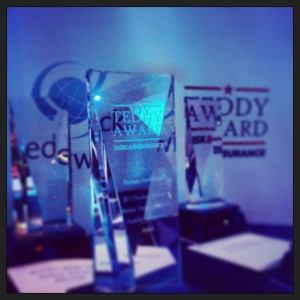
Having recently returned from the National Workers' Compensation and Disability Conference in Las Vegas, I am impressed to reflect on how the 2013 recipients of the Teddy Awards are just the latest crop of companies and their risk and benefit leaders that exemplify the spirit of innovation which paves the way for the next level of performance in our industry.
Why are they called the Teddy Awards? The Theodore Roosevelt Workers' Compensation and Disability Management Award recognizes excellence in workers' compensation risk management in the for-profit and nonprofit sectors for their efforts to reduce the number and cost of injuries to workers. The award was named in honor of President Theodore Roosevelt who, in 1908, introduced and promoted the first piece of significant workers' compensation legislation in the United States.
The Teddy Award has been given by Risk & Insurance® for 17 years and is presented at the annual NWCD Conference. It is sponsored by Sedgwick and given to the recipients by our CEO, Dave North, and Dan Reynolds, Editor-in-Chief of the magazine. The key award criteria relate to:
- Performance
- Sustainability
- Teamwork
- Innovation
Let's look at some characteristics of those who won this year and then peel the onion back on the common criteria that define and drive innovators in the world of occupational and non-occupational risk exposures.
Among the four award winners and two finalists of this year's Teddy Awards, a few common themes emerged and are instructive of the innovation mindset that enables not just improvement, but often radical change that can have the bigger impact. The first observation is the diversity of industries represented. No single industry stood out as being any more accomplished than another despite the fact that some industries are simply more hazardous than others. A key common denominator, however, was the collaboration between functionaries, particularly risk and benefits/human resources leaders. This element, while often uncommon across American business, demonstrates the power of teamwork that can accelerate the accomplishment of higher-order goals. Put another way, big problems are not often optimally addressed in silos.
Another common denominator was a broader, cross-functional collaboration among other stakeholders, bringing a wider set of experiences, expertise and opinions to the table and improving the chances of significant results. Immediate managers (CFOs, General Counsel, heads of HR, etc.) up through CEOs were engaging alongside other discipline leaders not regularly associated with being true risk stakeholders (i.e. operations, compliance, process engineering).
An extension of this internal teamwork was seen in external collaboration with risk partners such as brokers, consultants and third party administrators. In nearly every case, external parties evidenced true partnership by engaging in, if not helping devise, the strategies employed to produce such substantial impact. Many of the companies saw radical reductions in frequency and/or severity of claims over relatively short periods and enabled winning leaders to influence time, money and people resource allocation in order to achieve agreed-upon objectives.
Speaking of risk strategies and goals, those represented in this high-achieving group all demonstrated what I would call robust strategies often associated with stretch goals, reflecting a need for radical change and not necessarily being willing to settle for mere incremental improvement, a hallmark of truly innovative approaches to problem solving.
Finally, while much attention was focused on addressing post-loss opportunities through claim and claim-related tactics, these winners also demonstrated an understanding of the opportunity and significance of focusing on prevention (if not complete elimination) of the drivers that contributed most to losses and ultimately to total cost of risk. Put simply by one award winner, "the best claim is the one that never happens." Though claims is our business, I know we as strategic partners with our clients would much rather see an accident avoided than see another employee suffer the often permanent and life-changing effects of workplace injuries.
Let's celebrate with the award-winning companies their demonstration of why risk and benefit managers play such important roles in America's workplaces of all types and sizes. Click here to view this year's Teddy Award winners.
Chris Mandel, SVP Strategic Solutions